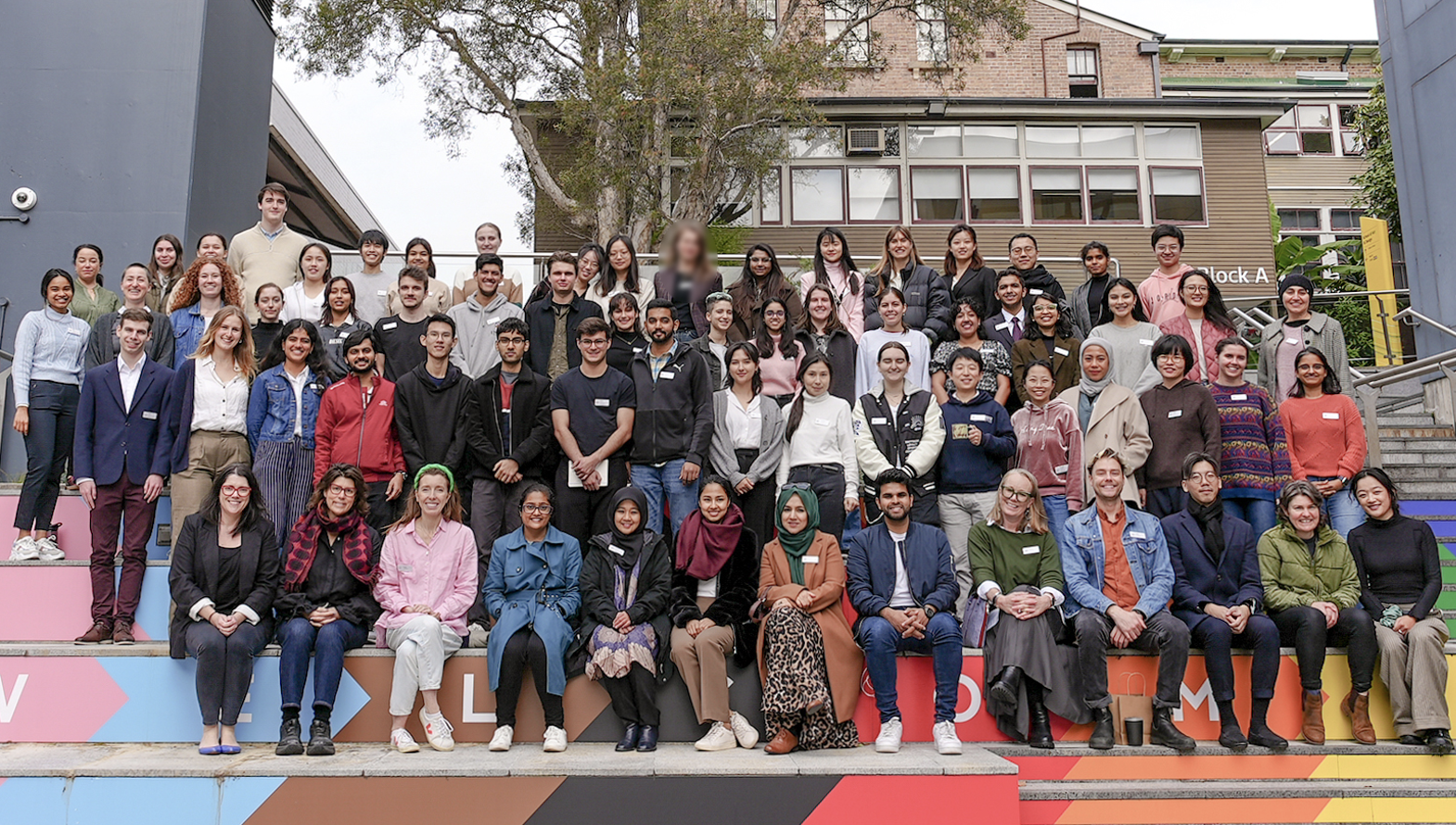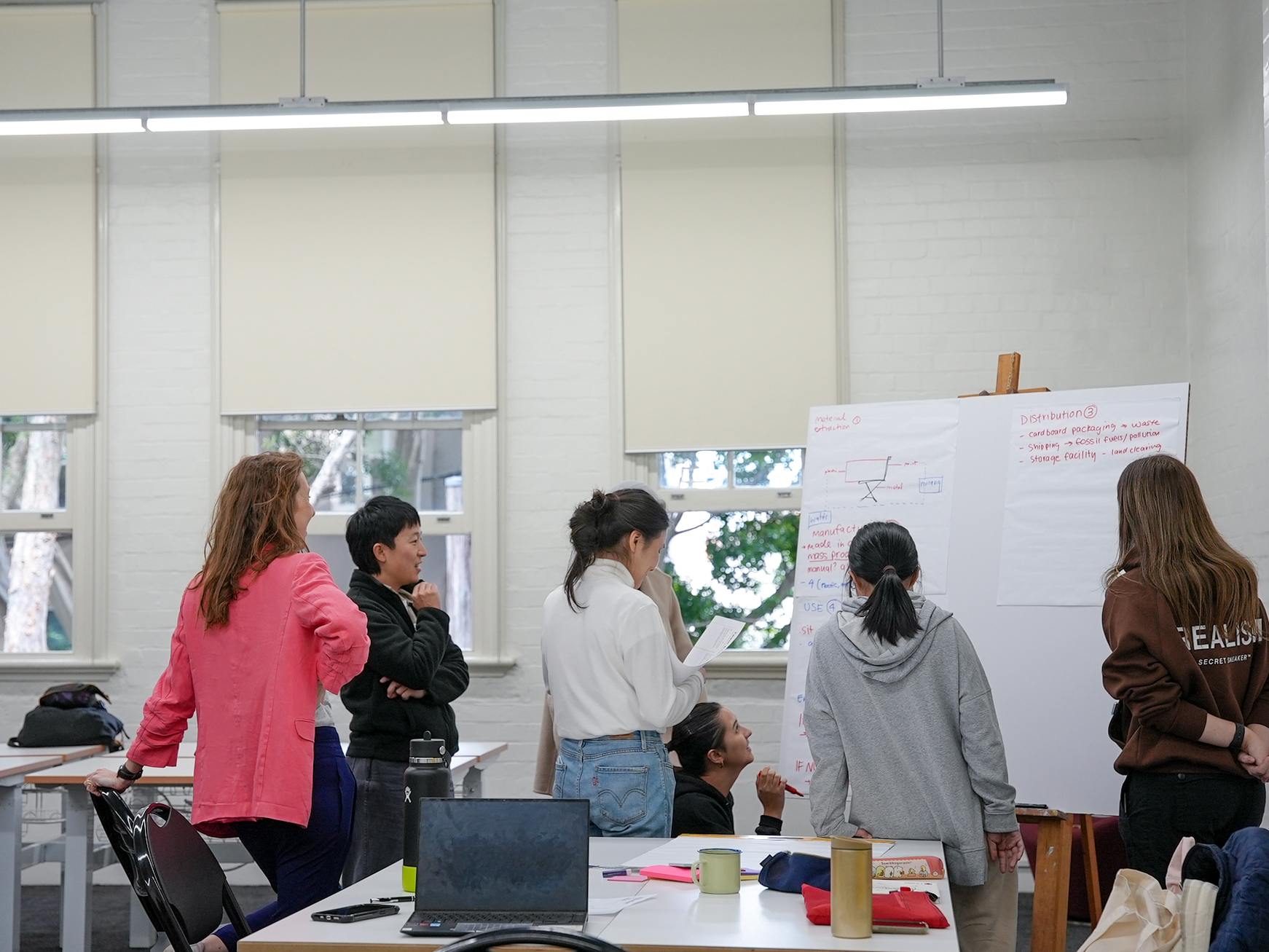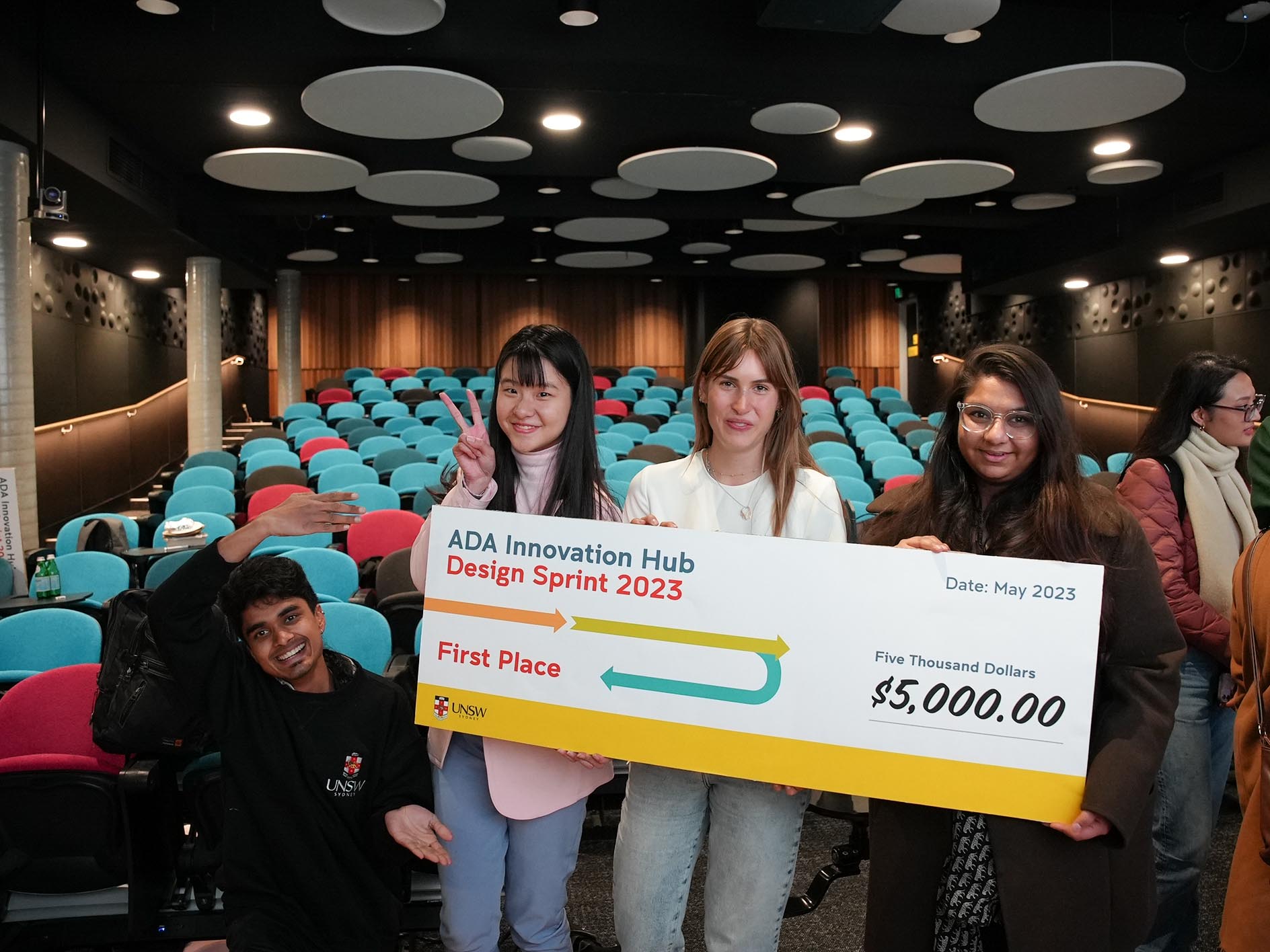
Sixty UNSW Sydney students from ADA (Arts, Design and Architecture) and Science collaborated in hands-on training paired with a design sprint to learn and apply principles of the circular economy.
A student-driven service to rehome, repurpose and recycle unwanted household goods from student accommodation has won the inaugural ADA Innovation Hub Design Sprint for UNSW students in O-Week.
The project, Home Hub, addresses the waste created as thousands of students move in and out of student accommodation each year, buying and discarding household goods, such as appliances and soft furnishings. With student colleges housing 30,000 students annually, the waste is significant, says Prerna Gupta, a member of the winning team and Master of Design student from Delhi.
“Home Hub encourages us to rethink home furnishings as short-term disposable goods in alignment with the university’s sustainability goals,” said Ms Gupta. “Our team had all seen the amount of waste generated from students graduating university, the boxes and boxes piled up. This sparked the idea of creating Home Hub, of getting creative with [student] household waste.”
The end-to-end service allows students to donate and receive household goods facilitating a sharing economy that extends their product life, reduces waste and curbs primary consumption. Products are collected, cleaned, repaired and recirculated. Components from old or unusable goods can also be repurposed through the UNSW Centre for Sustainable Materials Research and Technology (SMaRT@UNSW) or recycled externally.
Ms Gupta was one of sixty students from UNSW Arts, Design & Architecture and UNSW Science who took part in the two-day immersive workshop and design sprint on the circular economy that culminated in a pitching competition for a total of $11,000 in prize money.
“Rather than the traditional ‘take, make, dispose’ economic model, the circular economy advocates a cycle of use, reuse and recycling to create a more sustainable and resilient economy that benefits both people and the planet,” said Dr Carly Vickers, Academic Lead of the ADA Innovation Hub.
“The jobs of the future are going to require this knowledge. We want to recruit all students to be a lever for change, to better understand how to collaborate and create systems and services, new behaviours and new ways of thinking and working through a circular-economy lens.”

The design sprint is part of the Innovation Hub’s mission to connect staff, students, community and industry partners to provide interdisciplinary expertise to combat today’s complex problems and facilitate positive change.
The training was co-developed and delivered by Dr Vickers, a practice-based researcher specialising in interdisciplinary design-thinking and problem-solving methodologies, and Pippa Corry, Founder and Director of philo & co, a circular economy consultancy that helps design agencies and brands implement circular business models and design practices.
“We're at near tipping points where we're exceeding a number of our planet’s boundaries,” said Ms Corry. “So if we want to sustain livelihoods, societies, if we want sustainable businesses for the future, and regenerate the natural world, we really have to rethink how we operate these businesses and how we better work with nature.”
The training looked at contexts and causes (how and why we got to the current impasse), circular economy methodologies, frameworks and design practices (how to overcome problems and design out negative impacts). They also examined the interconnected nature of the complex systems that govern today’s world, using systems mapping to better understand and manage them with the goal of influencing change.
The design sprint gave students the opportunity to immediately apply these new skills to tangible examples. Students collaborated in interdisciplinary teams, meeting for the first time at the workshop. Teams were tasked with developing a solution to one of three challenges drawn from the UNSW Environmental Sustainability Plan:
-
to reimagine UNSW spaces and places to create a net positive impact on our local environment,
-
to reimagine UNSW student learning and campus experiences to phase out waste,
-
or to inspire UNSW staff and students to adopt circular practises to create positive social outcomes for life on campus.
The students’ solutions included CollectiveCUP, an on-campus recycling system for single-use coffee cups, Re-Ink, a SodaStream for pens to enable their recycling. It extended to GreenSkyThinking promoting the recovery of UNSW tree canopy through rooftop gardens fed with composted campus food waste and rooftop rainwater harvesting.
Home Hub stood out for its complex rendering of circular principles, said Dr Vickers. “Home Hub reuses, repairs, repurposes and recycles these pre-loved household goods, but it also facilitates collaboration to strengthen the university community, provides volunteering opportunities, education and awareness, and community aid.”
It changes the student-body mindset by facilitating firsthand experience of contributing to a circular economy, she said. “It also attracts and supports students, such as international students, by reducing student costs currently under pressure with today’s cost-of-living crisis.”
Button Shop, an on-campus service that teaches you simple mending skills aimed at reducing fast fashion’s environmental footprint, was awarded second prize ($3,000), and Share-a-bite, a service that repurposes campus catering food waste to assist students struggling with cost-of-living expenses, was awarded third prize ($1,500) with Revolve, a UNSW clothes-swap community system, taking out the People’s Choice award ($1,500).
The interdisciplinary teams meant students were working collaboratively across diverse skillsets to develop and test the feasibility of their solutions within the fast-paced environment of the sprint. For Ms Gupta, having teammates with environmental management and entrepreneurial experience alongside her design knowledge made the experience more enriching.
“It helped us to establish a system which along with doing good for the environment could also
sustain itself. We had very interesting points of views coming together,” said Ms Gupta. “The exercises helped us to work together as a team to understand each other's dynamics and get the ideas and conversation flowing.”
Collaboration is integral to achieving a circular economy, Ms Corry said. “The training provided a model for the working world [where] you’re going to have to collaborate with different people and capabilities, and it’s also that diversity of thought that we want to harness to create inclusive, systemic change.”
Underpinning the initiative is the belief that everyone is a designer, said Dr Vickers. “You don't have to be the person designing the building or the new product,” she says. “You can be the person who's changing government policies, you can be advancing education through pedagogical means, you can be realising effective environmental management, and so on. Everyone has the ability to bring about the societal change that we need.”
We can all inspire and influence other people’s behaviours, mindsets and capabilities, Ms Corry said. “We wanted students to recognise they have a huge amount of agency in the world and if they can harness that and approach problems [through a circular economy lens], we can really start to achieve better outcomes for society and the impact we collectively have on the world.”
The students’ concepts were judged on their ability to provide a clear solution to a compelling need: the strength/boldness of innovation, its scalability, how they identified and overcame barriers using circular methodologies and business models, and their effective pitching of their concept.

The judging panel were impressed by the high calibre of innovation and professionalism evidenced in the pitches. They included Professor Claire Annesley, Dean of UNSW Arts, Design & Architecture, Acting Provost, Scientia Professor Sven Rogge, Dean of UNSW Science, and Scientia Professor Veena Sahajwalla, Director of the Centre for Sustainable Materials Research & Technology (SMaRT Centre).
For Ms Gupta, it was particularly exciting to have Prof. Sahajwalla at the pitch night. “I’ve been following her work and the amazing research she does for recycling waste at the UNSW SMaRT centre.”
The energy and the success of the pitch night was a testament to how well the teams had worked together, Ms Corry said. “The impressive nature of the presentations, the level of thinking and detail they had considered to try to anticipate the feasibility of their solutions, the complexity of the problems they were approaching. It made me feel very positive about the future of the workforce.”
The students gained a Credly micro-credential, along with recognition of their participation on their Australian Higher Education Graduate Statement (AHEGS).
Home Hub was created by Hannah Beaton (School of Biological, Earth and Environmental Sciences), Prerna Gupta (School of Art & Design), Himanshu Umesh (School of Art & Design) and ZhenZhuo (Star) Xian (School of Biological, Earth and Environmental Sciences).
- Log in to post comments
